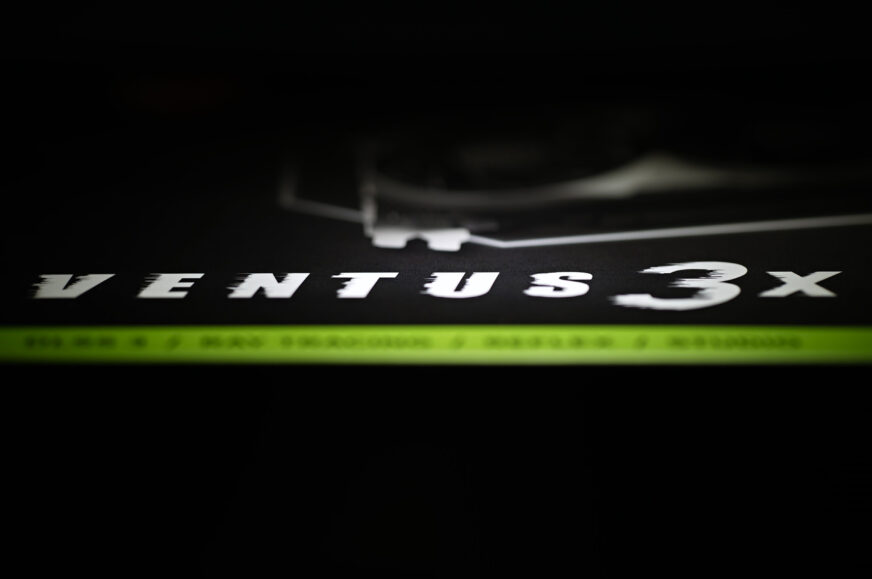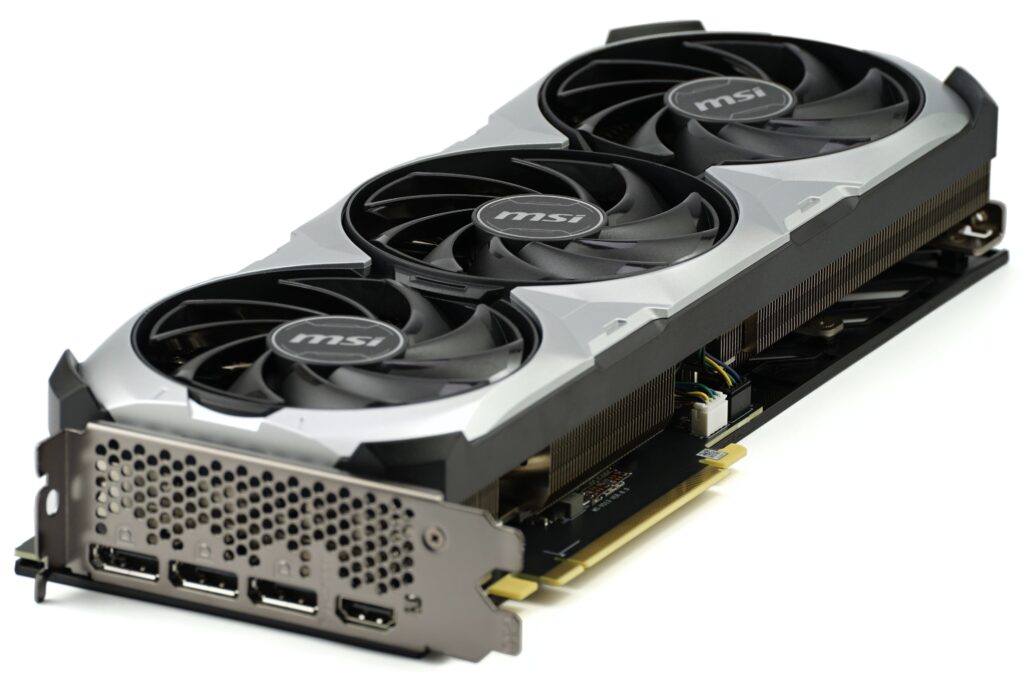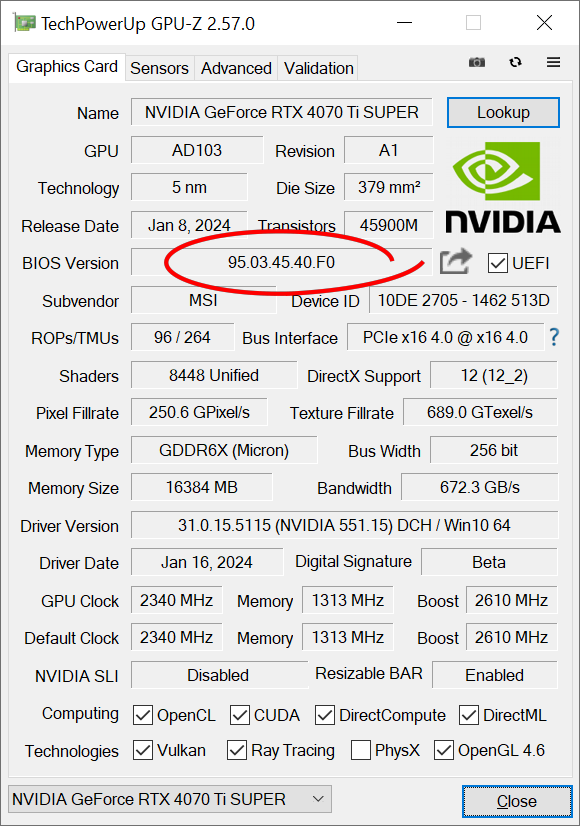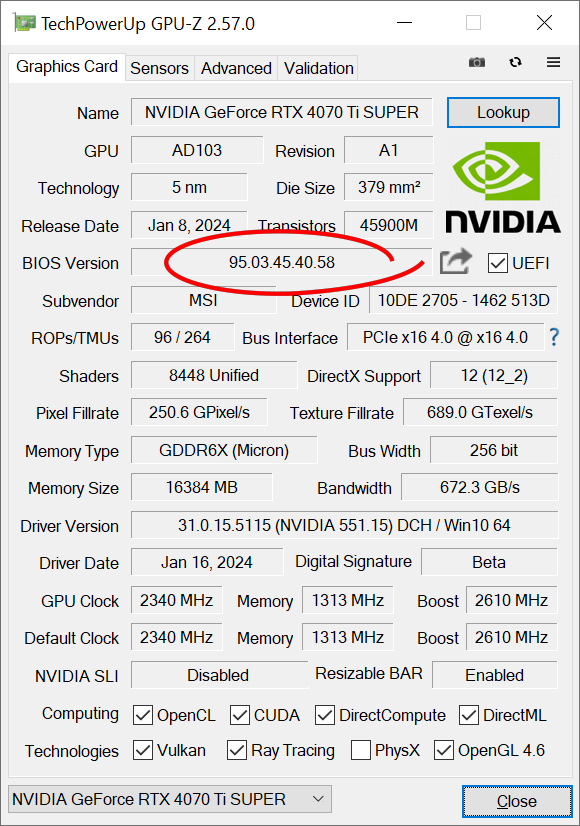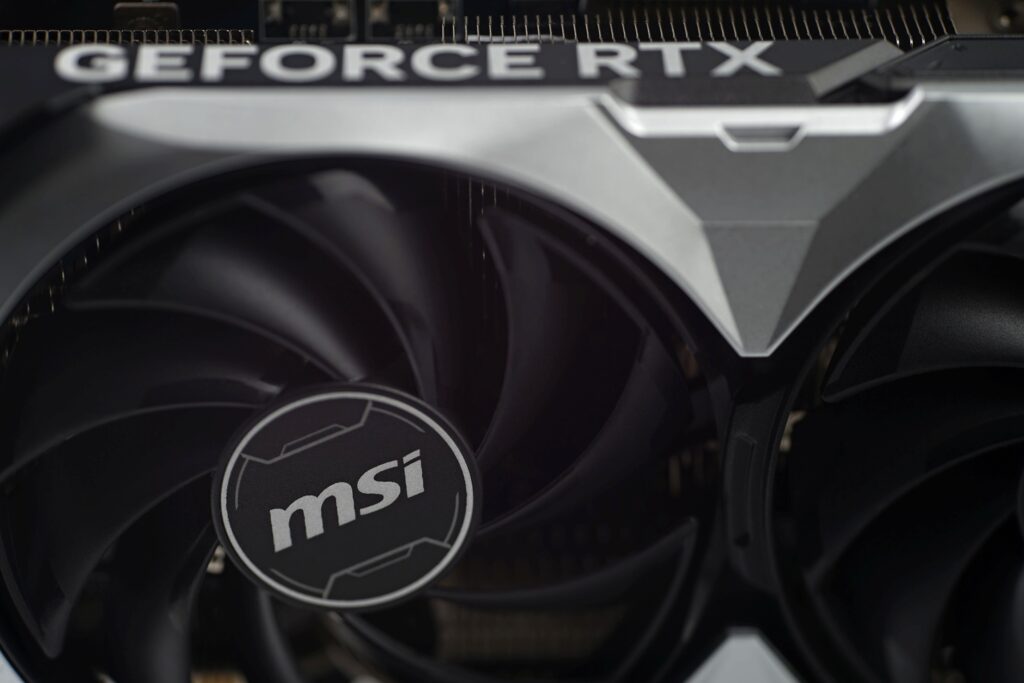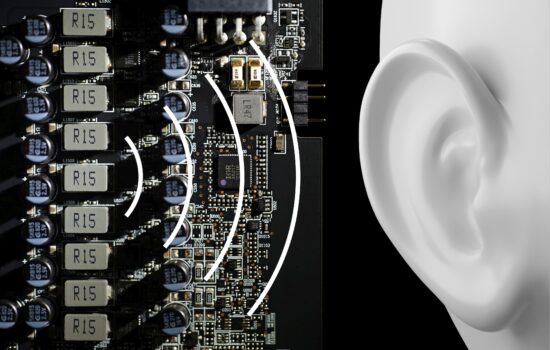First, second... third VBIOS
The GeForce RTX 4070 Ti Super Ventus 3X graphics card came out with a BIOS that MSI (and even Nvidia) wasn’t happy with. After the second revision, there is the third, the last revision of the BIOS. This one increases the power limit to allow higher GPU clock speeds to be achieved. However, this comes at the cost of a bit lower power efficiency. To update or not to update? That’s for everyone to decide for themselves, if they get the chance.
First, second… third VBIOS
Completing the RTX 4070 Ti Super Ventus 3X tests was rather frustrating. In the finish line, new BIOSes were coming out that changed the features of this graphics card to some extent. Those who aspired to a massive database of results that could be labeled “permanent” (and up to date after release) were out of luck, unless they got to the third BIOS well in advance. We decided to publish the tests even though the results corresponded to the original BIOS 95.03.45.40.58. The latter isn’t something you won’t come across – the first wave of RTX 4070 Ti Ventus 3X cards hit the stores with this very BIOS.
It’s true that it was probably the manufacturers of prebuilts who have mostly updated (or are still updating) the BIOS, but it’s hard to say how the big vendors have approached this. Anyway, results with both the first and the third BIOS with the ending F0 (95.03.45.40.F0) are relevant. In the charts we refer to it as “v3”, the original BIOS is then labeled “v1”. We haven’t dealt with the middle one, it’s already rather unimportant, as no “finished” graphics cards included it either, and after the RTX 4070 TiS Ventus 3X was stocked, nobody seems to update to it either (maybe only experimentally).
Before we get to comparing results across BIOSes, it’s important to note that our RTX 4070 Ti Super Ventus 3X performed “as expected” speed-wise even with the original BIOS. Some even have greater than 9-percent improvement over the non-Super RTX 4070 Ti, that percentage point or two also bounces around depending on what graphics card designs are being compared. In our case, if it wasn’t a confrontation of the high-end Suprim X (RTX 4070 Ti) and the Ventus 3X from the other end of the spectrum, we’d get to that +10% as well. It’s worse when someone measures (for example, TechPowerUp!) only +5% (and at the same time -5% compared to other RTX 4070 Ti Super designs), which our experience or methodology doesn’t confirm, which is also to some extent due to the composition of the testing games set.
With the Ventus 3X variant, one must also take into account that it is a nonOC card and achieving lower performance is only natural as a result of lower clock speeds with a lower power limit. These parameters were also observed in our tests and naturally resulted in above-standard efficiency.
Higher clock speeds, lower efficiency
With the new (final) BIOS in heavier gaming workloads, GPU clock speeds increased by 35–45 MHz (i.e. 2710–2760 MHz depending on load), which were expressed in various ways. The first is that in selected titles, game performance is up 3–4% (in Cyberpunk 2077 with RT graphics it’s up to +6%), but that’s with a simultaneous increase in power consumption of about 30–40 W (15%). With this, the efficiency has suffered a bit, but it’s still very decent, on average about 28% higher compared to the competing RX 7900 XT Pulse.
Unfortunately, there is some increase in consumption even in cases where the gaming or computing performance is still the same.Power consumption in Blender increased by more than 10 W (5%), while the render speed (Classroom@Cycles under CUDA) remained unchanged, because the GPU clock speeds are at their maximum (2775 MHz) in this load with both BIOSes. We can also talk about performance decrease with the latest BIOS in the context of low load. Whether it’s video playback (HEVC, VP9), accelerated web browsing or idle operation, power consumption is always higher. Cosmetically so of course, it’s nothing major. The main thing that makes the third BIOS revision make sense is in narrowing the gaming performance gap compared to other RTX 4070 Ti Super designs.
Hand in hand with higher performance naturally goes higher temperature and also the cooler is a bit noisier. However, it’s still one of the quieter solutions you’ll come across in graphics cards.
English translation and edit by Jozef Dudáš
- Contents
- First, second... third VBIOS
- Tabuľka parametrov
- Methodology: performance tests
- Methodology: how we measure power draw
- Methodology: noise and sound measurement
- Methodology: temperature tests
- Testovacia zostava
- 3DMark
- Age of Empires II: DE
- Assassin’s Creed: Valhalla
- Battlefield V
- Battlefield V with DXR
- Borderlands 3
- Control
- Control with DXR and DLSS
- Counter-Strike: GO
- Cyberpunk 2077
- Cyberpunk 2077 with DLSS
- Cyberpunk 2077 with DXR (and DXR with DLSS)
- DOOM Eternal
- F1 2020
- FIFA 21
- Forza Horizon 4
- Mafia: DE
- Metro Exodus
- Metro Exodus with DXR and DLSS
- Microsoft Flight Simulator
- Red Dead Redemption 2 (Vulkan)
- Red Dead Redemption 2 (Dx12)
- Shadow of the Tomb Raider
- Shadow of the Tomb Raider with DXR
- Total War Saga: Troy
- Wasteland 3
- Overall gaming performance and performance per euro
- CompuBench (OpenCL)
- SPECviewperf 2020 and SPECworkstation 3
- FLOPS, IOPS and memory speed tests
- 3D rendering 1/2 (LuxMark and Blender@Cycles)
- 3D rendering 2/2 (Blender@Radeon ProRender and Eevee)
- Photo editing (Adobe Photoshop, Lightroom and Affinity Photo)
- Broadcasting (OBS and Xsplit)
- Password cracking
- GPU clock speeds
- GPU and VRAM temperatures
- Net graphics card power draw and performance per watt
- Analysis of 12 V rail power supply (higher load)
- Analysis of 12 V rail power supply (lower load)
- Analysis of 3,3 V rail power supply
- Noise level
- Frequency response of sound





